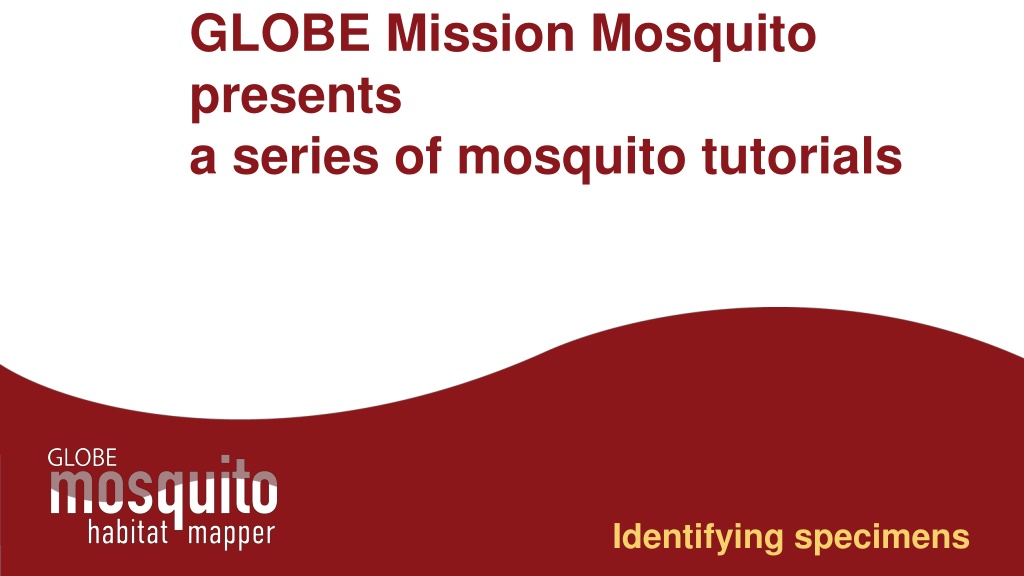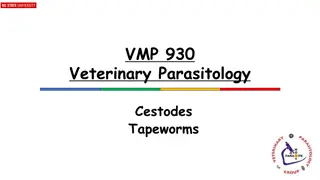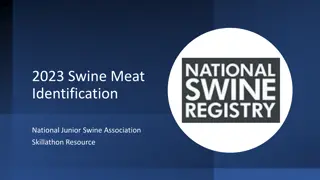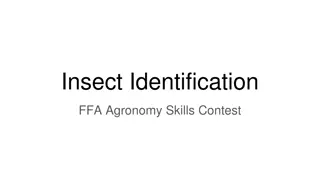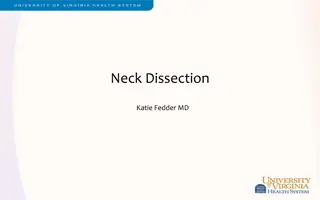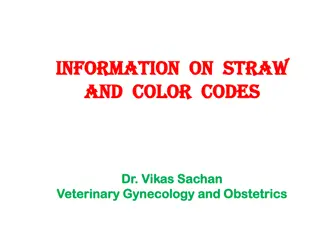Understanding Mosquito Larvae: Identification and Anatomy
Explore tutorials from GLOBE Mission Mosquito focusing on identifying mosquito larvae specimens including Anopheles, Aedes, and Culex genera. Learn about the morphological characteristics, habitats, and anatomy of mosquito larvae to understand their role as disease vectors. Detailed descriptions and images provided for better identification.
Download Presentation
Please find below an Image/Link to download the presentation.
The content on the website is provided AS IS for your information and personal use only. It may not be sold, licensed, or shared on other websites without obtaining consent from the author. Download presentation by click this link. If you encounter any issues during the download, it is possible that the publisher has removed the file from their server.
Presentation Transcript
GLOBE Mission Mosquito presents a series of mosquito tutorials Identifying specimens
Identifying specimens Slide Sets 1. Why Make Observations? 2. Mosquito as Vectors of Disease 3. Satellite Data and NASA Connections 4. Prior Knowledge Quiz 5. Using the MHM tool for the first time 6. Describing your mosquito habitat site 7. Using the macro lens 8. Identifying specimens 2
Identifying specimens or Know your mosquito larvae
Knowing your mosquito larvae involves . Recognizing the gross morphological characteristics of mosquito larvae. Learning the morphological features used in identifying a larva. You will investigate and identify the larvae of three genera of mosquitoes: Anopheles Aedes Culex These three genera are of interest because they contain species that can transmit pathogens to humans and cause disease. To know differences between the larvae of these three genera, you will examine the terminal abdominal segments (8-10).
Anopheles Anopheles mosquito larvae are found in a wide variety of habitats. Many species of Anopheles prefer open-water pools with little vegetation, but others have adapted to other habitats. Anopheles species lay individual eggs supported by floats on the water surface or on moist soil immediately adjacent to fluctuating water bodies.
Culex Culex mosquitoes breed in stagnant water found in: Sewage systems Drainage systems Septic tanks Containers: tires, buckets and rain barrels Open surface water habitats: swamps, marshes, bogs, rice fields, pastures They prefer to lay eggs in rainwater barrels, storm drains, and septic tanks. Eggs are laid in rafts that float on the water surface.
Head The head is round or slightly oblong and slightly flattened Reproduced with permission from CDC, UTEP Biodiversity Collection http://www.utep.edu/leb/mosquito/
Thorax The thorax appears distinct from the head, separated by a very narrow neck. Reproduced with permission from CDC, UTEP Biodiversity Collection
Abdomen The abdomen is the segmented section behind thorax. The abdomen has 10 segments, but not all are distinct. In Aedes and Culex, the ninth segment is not distinct; in Anopheles, the tenth. The four white protrusions on the anal segment are anal papillae which perform osmotic regulation of the organism. Reproduced with permission from CDC, UTEP Biodiversity Collection http://www.utep.edu/leb/mosquito/
Hairs The number, position and arrangement of hairs on the larva can be diagnostic. TUFTS ANAL BRUSH Reproduced with permission from CDC, UTEP Biodiversity Collection http://www.utep.edu/leb/mosquito/
Siphon The siphon is an air tube on the 8thabdominal segment. All genera except one- have a siphon. Reproduced with permission from CDC, UTEP Biodiversity Collection http://www.utep.edu/leb/mosquito/
Pecten Pecten are a row of closely set teeth or spines on each side of the siphon. Reproduced with permission from CDC, UTEP Biodiversity Collection http://www.utep.edu/leb/mosquito/
Comb Scales A line or patch of scales found on the 8th abdominal segment in most genera. Reproduced with permission from CDC, UTEP Biodiversity Collection http://www.utep.edu/leb/mosquito/
First step in mosquito larvae identification Place the larvae in cups, vials or plastic bags. Observe them to see how they suspend from the surface of the water. If the larvae are lying flat on the surface, they are from the genus Anopheles. This is the only genus of mosquito that lies flat on the surface; all others are suspended from the surface at an angle.
Details of abdominal morphology Key features are often found on the anal segment and the siphon. Siphon: the air tube used by some species of mosquito to breathe. (more on next slide). Saddle: a dark, thickened band on the anal segment. It can ring the segment, be in two pieces, or appear like it does here, as a saddle. Comb scales: scaly or spiny spicules found in rows or a patch on the abdomen. Pecten: an even row of tiny spines found on the siphon.
Siphon The siphon is an air tube located on the abdomen of the larva. Because the larva hatches from the egg and lives in the water, the siphon allows the larva to breathe. Most species, including those in the genera Culex and Aedes, have a siphon and spend most of their time on the surface breathing. Anopheles does not have a siphon. Instead, it lays parallel to the surface and breathes through openings on its 8thabdominal segment (spiracles). Some species have specialized siphons and attach to emergent plants found in water, using the plant tissue to access air to breathe.
Abdominal Hairs The placement and number of hairs on the abdomen can be diagnostic. Setae, Brushes, Tufts and Hairs: Setae: another word for insect hair Brush: a clump of tufts Anal Brush: the anal brush is is used like a rudder when the larva is swimming Tuft: more than one hair growing together.
Look closely Distinguishing between Aedes albopictus and Aedes aegypti requires at least 35x magnifier. You will need to look at the comb scales. Note the differences shown in the diagrams above.
Mosquito Larva Anatomy Identifying mosquito genera and species in your area Familiarize yourself with the general anatomy of the mosquito larvae and the key features that distinguish those genera or species that are found in your locality. Consult with mosquito experts or mosquito identification keys for your locality to identify important species in your region.
Identifying specimens Author: Russanne Low PhD Science Lead GO Mosquito Habitat Mapper Institute for Global Environmental Strategies Arlington VA Rusty_low@strategies.org Did you modify this file for your class? Put your name and the date here! This work is licensed under https://creativecommons.org/licenses/by-nc-sa/4.0/
